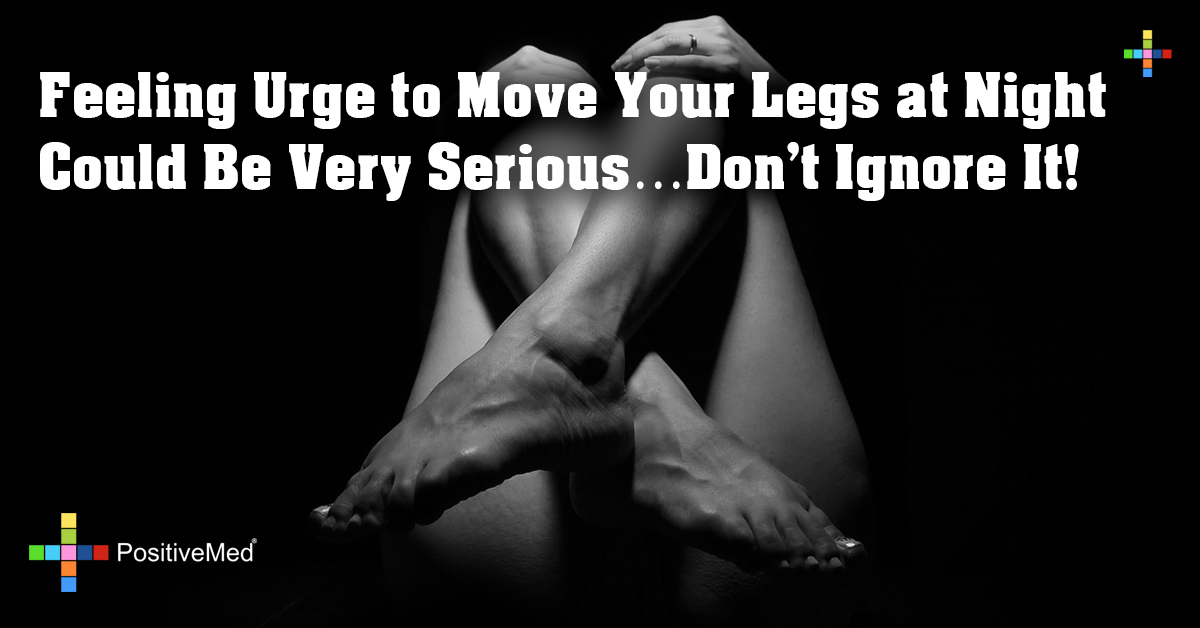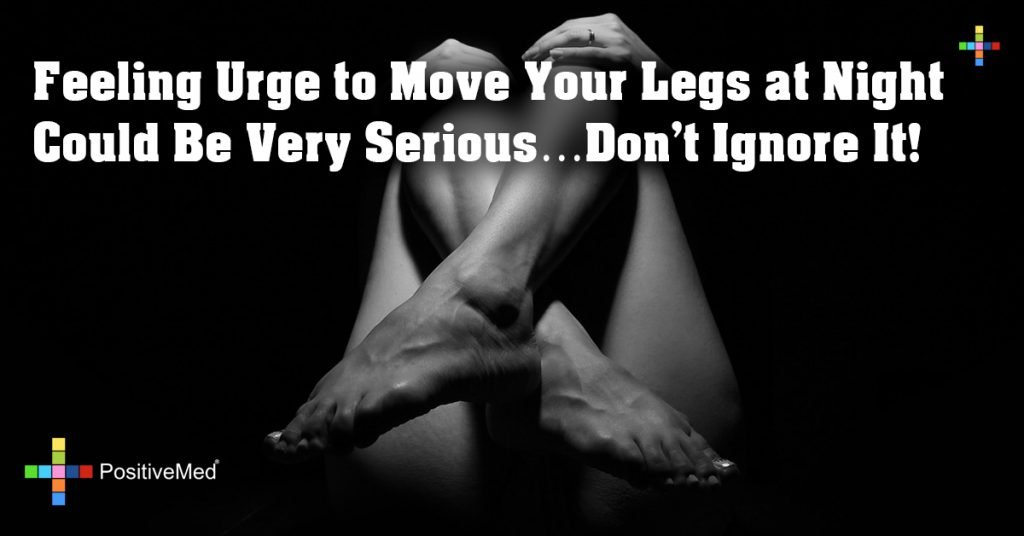
Feeling Urge to Move Your Legs at Night Could Be Very Serious…Don’t Ignore It!
[nextpage title=”…”]
Willis-Ekbom Disease, widely known as Restless Leg Syndrome (RLS), is a neurological disorder that affects millions each year. The Mayo Clinic reports that there has been an increase in the desire for treatments that are not pharmacological in nature including mental altering activities, avoiding substances or medications that may exacerbate RLS, and iron supplements. Not only does RLS occur more in women that in men, but it can happen at any age. Furthermore, the symptoms of RLS vary in during and severity for each person ranging from mild to severe.
According to Johns Hopkins Medicine, Restless Legs Syndrome has four primary features including:
1. Uncomfortable Sensation and Urge to Move Legs
The sensations felt in individuals affected by RLS include aching, pulling, and crawling that may range from uncomfortable to painful. There is an overall urge to move the legs in order to relieve this sensation. Although it frequently occurs in the calf area, it can range from the thigh to the ankle in one or both legs. Rarely, this sensation can also be felt in other limbs such as the arms.
2. Increased Symptoms at Night
Generally, those who experience restless leg syndrome feel symptoms at bedtime, causing sleep problems. While some may have symptoms throughout the day as well, they tend to increase during the evening when trying to sit still for an extended period of time.
RELATED ARTICLE: The 8 Main Symptoms of Restless Leg Syndrome and How to Treat It Naturally
3. Sensations are Initiated During Rest
Most people report that they have symptoms of restless leg syndrome when they are in periods of rest such as lying down at night, sitting down all day at work, or throughout a long plane ride. Unfortunately, this may make activities that would normally be enjoyable, unbearable.
4. Symptoms are Relieved with Movement
Movement such as getting up and walking are what typically relieve any symptoms associated with RLS. Once the sufferer settles back into a restful state, they tend to return. Most individuals with restless leg syndrome experience rhythmic movements during sleep or legs that “jump” on their own.
[/nextpage] [nextpage title=”…”]
For many people, getting restless legs relief is a multi-step process. Lifestyle changes and home remedies are useful in calming your restless limbs. No matter what your pain level is, there are quite a few different options you can try that will help manage your condition. Medications are just one part of taming restless legs. Eliminating common triggers like alcohol, tobacco, and stress can also relax your limbs. Let’s examine drug-free treatments for restless legs relief as noted by the Willis-Ekbom Disease Foundation.
Walk and Stretch – Walking is probably the best way to relieve symptoms associated with RLS. Additionally, stretching can work your calves, Achilles tendons, thighs, and hamstrings, which are the main areas affected by this syndrome.
Apply Heat or Cold – In some individuals, applying hot compresses, heating pads, or taking warms baths can help relieve restless legs. Others find more benefit in cold remedies such as ice packs and cold showers.
Massage – Although an overall body massage can relax and reduce stress in those who experience RLS, focusing on areas primarily affected such as the legs can do wonders. Speak with your doctor or massage therapist about the benefits of massage.
Muscle Rubs – There are quite a few over-the-counter options when it comes to muscle rubs, but those with the most notable benefits include Bengay and Aspercreme. These not only improve blood flow but can relieve pain.
Improve your Diet – Alcohol and caffeine can have a negative impact on those affected by RLS. Limit how much of these substance you consume. Additionally, eat a healthy diet that promotes sleep and seek out natural substances that can promote sleep such as chamomile tea.
RELATED ARTICLE: 24 Pictures That Show Which Muscle You Are Stretching During Your Exercise!
Exercise – Along with walking and stretching, exercising daily for at least thirty to sixty minutes can help ease symptoms and induce better sleep habits. Exercises don’t have to be intense and can include jogging, yoga, and a variety of other activities.
Take Vitamins – Although research is limited in this area, some studies have shown a connection between vitamin D deficiency and RLS. In the Sleep Breath magazine published in 2015, researchers found that participants given vitamin D supplements had an overall improvement in their symptoms. RLS has also been associated with low levels of iron, vitamin C, and vitamin E.
If you suspect you have restless leg syndrome or already suffer from it, work closely with your physician before making any changes or implementing new supplements. Getting the right treatment plan based on your individual needs and desires can improve your sleep and overall quality of life.
[/nextpage]






